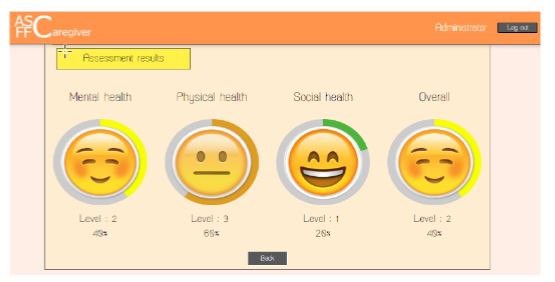Health Risk Analysis Expert System for Family Caregiver of Person with Disabilities using Data Mining Techniques
Main Article Content
Abstract
The nursing care for the family caregiver of the disabled person is an important task for long-term care, since the caring people with disabilities is the difficult and hard task. In this paper, the Health Risk Analysis System or HRAS is introduced which is the new expert system for identifying the health risk level in three aspects including mental, physical, and social health aspects, and provides the intervention according to the health risk level of each aspect as well. The HRAS is the client-server system. The HRAS client proceeds on web-based application to collect health data via online questionnaire and shows the analysis results. The collected health data are transmitted to the server to analysis and to assess the health risk level by using the proposed classifier model named Risk Analysis Classifier or RAC. The classification algorithm and rule-based classifier are used to build the RAC. The RAC is evaluated using k-fold cross validation and the experts with annotated health data and unseen data. The evaluation results showed that Neural Network performs the best performance overall which it achieves the accuracy above 90% in all health data sets. Thus, the Neural Network is the most suitable classifier for this work. In addition, the HRAS has been deployed and collected the user experience via the formal survey. These survey results demonstrated that the system provides high accuracy assessment and very utilization in several aspects.
Article Details
References
[2] C. Kritsanaphuti, U. Suksawatchon, W. Lawang, and J. Suksawatchon, “Health risk analysis system for family caregiver of disabled person,” in The 2nd International Conference on Information Technology (InCIT2017), Nov 2017, pp. 120-125.
[3] K. Tsukasaki, T. Kido, K. Makimoto, R. Naganuma, M. Ohno, and K. Sunaga, “The impact of sleep interruptions on vital measurements and chronic fatigue of female caregivers providing home care in Japan,” Nurs Health Sci, vol. 8, no. 1, pp. 2-9, Mar 2006.
[4] K. Salter, L. Zettler, N. Foley, and R. Teasell, “Impact of caring for individuals with stroke on perceived physical health of informal caregivers,” Disabil Rehabil, vol. 32, no. 4, pp. 273-281, 2010.
[5] S.R. Beach, R. Schulz, G.M. Williamson, L.S. Miller, M.F. Weiner, and C.E. Lance, “Risk factors for potentially harmful informal caregiver behavior,” J Am Geriatr Soc, vol. 53, no. 2, pp. 255-261, Feb 2005.
[6] M. I. Andreakou, A. A. Papadopoulos, D. B. Panagiotakos, and D. Niakas, “Assessment of Health-Related Quality of Life for caregivers of Alzheimers disease patients,” International Journal of Alzheimers Disease, https://doi.org/10.1155/2016/9213968.
[7] R. Khanna, S. S. Madhavan, M. J. Smith, J. H. Patrick, C. Tworek, and B. Becker-Cottrill, “Assessment of health-related quality of life among primary caregivers of children with autism spectrum disorders,” J Autism Dev Disord, vol. 41, no. 9, pp. 1214-1227, Sep. 2011.
[8] M. Buhse, “Assessment of caregiver burden in families of persons with multiple sclerosis,” Journal of Neuroscience Nursing, vol. 40, issue 1, pp. 25-31, Feb 2008.
[9] N. Rathore, Divya, and S. Agarwal, “Predicting the survivability of breast cancer patients using ensemble approach,” in 2014 International Conference on Issues and Challenges in Intelligent Computing Techniques (ICICT), Feb 2014, pp. 459-464.
[10] A. S. M. Salih and A. Abraham, “Novel ensemble decision support and health care monitoring system,” Journal of Network and Innovative Computing, vol. 2, no. 2014, pp. 041-051, 2014.
[11] K. Srinivas, B. K. Rani, and A. Govrdhan, “Applications of data mining techniques in healthcare and prediction of heart attacks,” International Journal on Computer Science and Engineering (IJCSE), vol. 2, no. 02, pp. 250-255, 2010.
[12] P. Songthung and K. Sripanidkulchai, “Improving type 2 diabetes mellitus risk prediction using classification,” in 2016 13th International Joint Conference on Computer Science and Software Engineering (JCSSE), July 2016, pp. 1-6.
[13] T. M. Mitchell, “Machine learning and data mining,” Commun. ACM, vol. 42, no. 11, pp. 30-36, Nov. 1999. [Online]. Available: https://doi.acm.org/10.1145/319382.319388
[14] Y. Murakami and K. Mizuguchi, “Applying the nave bayes classifier with kernel density estimation to the prediction of protein interaction sites,” Bioinformatics, vol. 26, no. 15, pp. 1841-1848, 2010.
[15] G. P. Zhang, “Neural networks for classification: a survey,” IEEE Transactions on Systems, Man, and Cybernetics, Part C (Applications and Reviews), vol. 30, no. 4, pp. 451-462, Nov 2000.
[16] C.-C. Chang and C.-J. Lin, “LIBSVM: A library for support vector machines,” ACM Trans. Intell. Syst. Technol., vol. 2, no. 3, Article 27 (May 2011), pp. 27:1-27:27 DOI=https://dx.doi.org/10.1145/1961189.1961199.
[17] A. Agrawal, H. L. Viktor and E. Paquet, “SCUT: Multi-class imbalanced data classification using SMOTE and cluster-based undersampling,” in the 7th International Joint Conference on Knowledge Discovery, Knowledge Engineering and Knowledge Management (IC3K), Lisbon, 2015, pp. 226-234.
[18] N.V. Chawla, K.W. Bowyer, L.O. Hall, and W.P. Kegelmeyer, “SMOTE: synthetic minority oversampling technique,” J. Artif. Int. Res, vol. 16, no. 1, pp. 321-357, June 2002.
[19] A.P. Dempster, N.M. Laird, and D.B. Rubin, “Maximum Likelihood from Incomplete Data via the EM Algorithm,” Paper presented at the Royal Statistical Society at a meeting organized by the Research Section, December 8, 1976.
[20] D.M.W. Powers, “Evaluation: From Precision, Recall and F-Measure to ROC, Informedness, Markedness & Correlation,” Journal of Machine Learning Technologies, vol. 2, no. 1, pp. 3763, 2011.

